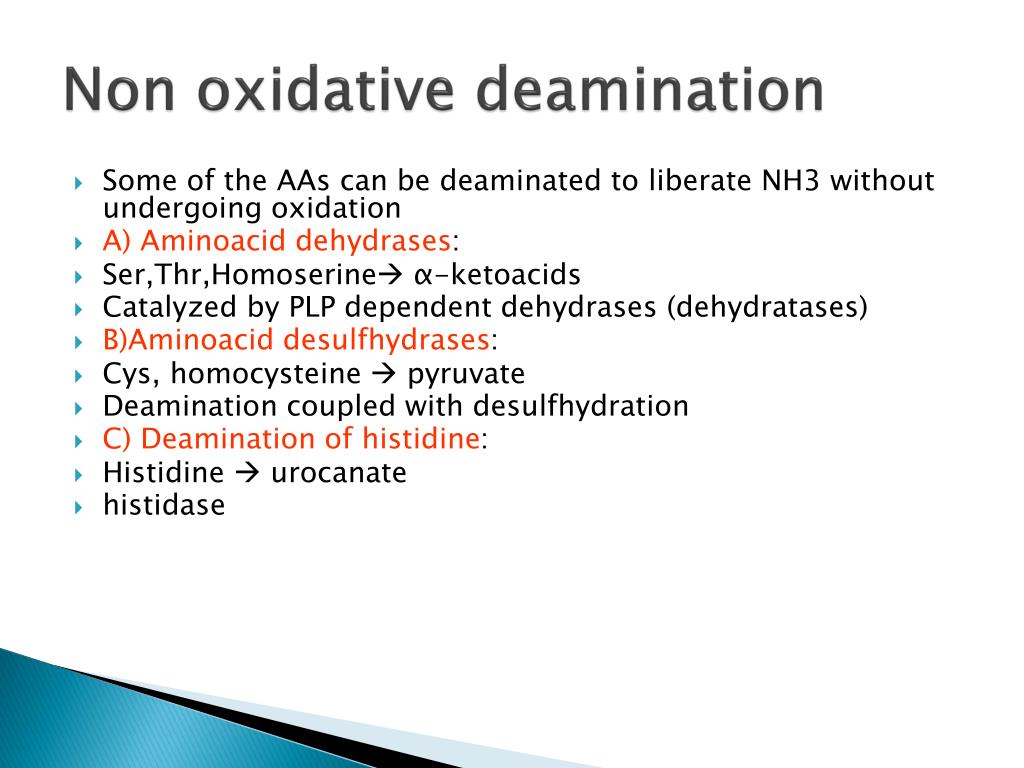
PPT AMINO ACID METABOLISM PowerPoint Presentation, free download ID7122612
Oxidative Deamination. In the breakdown of amino acids for energy, the final acceptor of the α-amino group is α-ketoglutarate, forming glutamate. Glutamate can then undergooxidative deamination, in which it loses its amino group as an ammonium (NH 4 +) ion and is oxidized back to α-ketoglutarate (ready to accept another amino group):
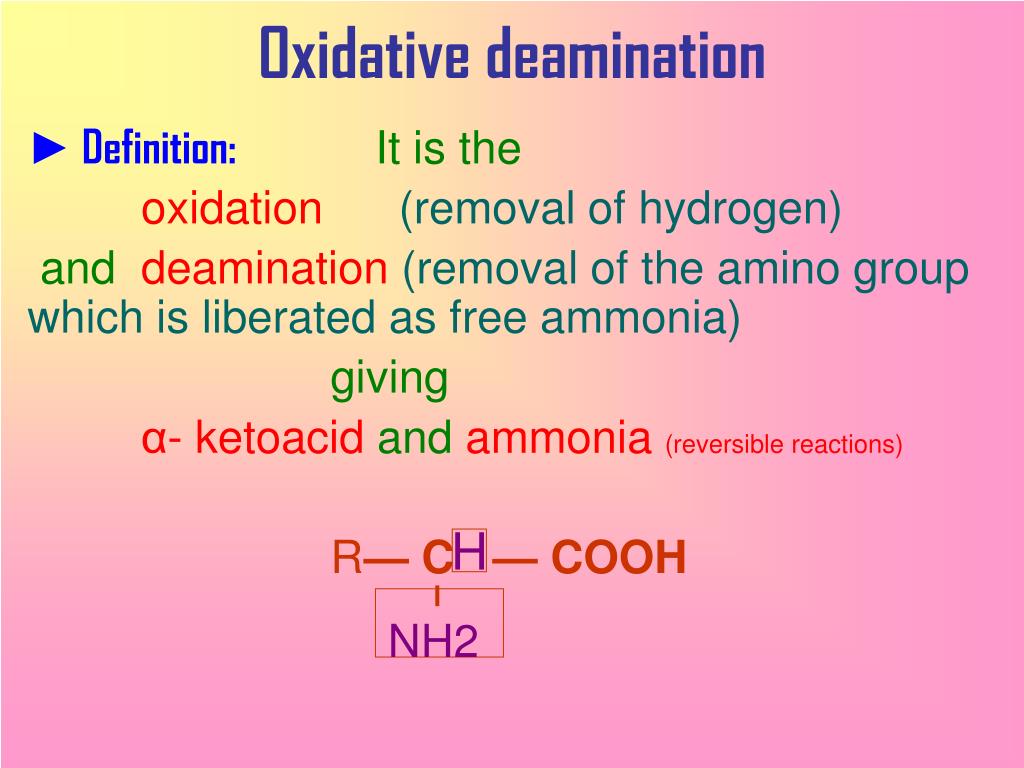
PPT Protein metabolism PowerPoint Presentation, free download ID3540412
It may be accomplished oxidatively or nonoxidatively. Oxidative deamination is stereospecific and is catalyzed by L- or D-amino acid oxidase. The initial step is removal of two hydrogen atoms by the flavin coenzyme, with formation of an unstable α-amino acid intermediate.

PPT Protein metabolism PowerPoint Presentation, free download ID3540412
Non-oxidative Deamination In nonoxidative deamination, the amine group is removed without the oxidation process. A byproduct of non oxidative deamination is ammonia, producing consequent a-keto acids. Hydroxyl acids with one or more hydroxyl groups undergo non oxidative deamination.

PPT Chapter 7 Catabolism of Proteins PowerPoint Presentation, free download ID599911
9.7: Degradation of amino acids. Understand the catabolism of amino acids, including transamination, oxidative amination, and urea cycle that takes care of the N and processing of the C skeleton of the amino acid to intermediates that enter into citric acid cycle for energy production. Amino acids are the products of stage 1 of protein catabolism.

Year 11 Bio. Key Points Removing Nitrogenous Wastes
An overview of the oxidative deamination of N -acetylneuraminic acid derivatives (Neu5Ac) leading to the formation of ketodeoxynonulosonic acid (KDN), its stereoisomers and glycosides is presented.

PPT Chapter 7 Catabolism of Proteins PowerPoint Presentation, free download ID599911
Nonoxidative deamination is a type of deamination reaction in which the removal of the amine group occurs without proceeding through an oxidation reaction. However, this type of deamination reactions liberates ammonia, producing the corresponding α-keto acids.

The Oxidative Deamination of Amino Acids docx D. Lamees Muhadharaty
Oxidative deamination is a form of deamination that generates α-keto acids and other oxidized products from amine-containing compounds, and occurs primarily in the liver. [1]

Protein and amino acid metabolism online presentation
Serine undergoes non-oxidative deamination to pyruvate, catalysed by serine deaminase. For other amino acids there is no direct deamination, but they can undergo transamination.

Difference Between Oxidative and Nonoxidative Deamination Compare the Difference Between
May 8, 2023 by Vivek Kumar Oxidative and Non- Oxidative Deamination Contents: Introduction Oxidative deamination Non-oxidative deamination Difference between oxidative and non-oxidative deamination. Introduction The removal of amino group from the amino acid as ammonia (NH 3) is called deamination.

PPT Amino acid metabolism PowerPoint Presentation, free download ID3816377
Non oxidative deamination Transamination Most amino acids are deaminated by transamination reaction catalysed by aminotransferases or transaminases. The -amino group present in an amino acid is transferred to an -keto acid to yield a new amino acid and the -keto acid of the original amino acid.
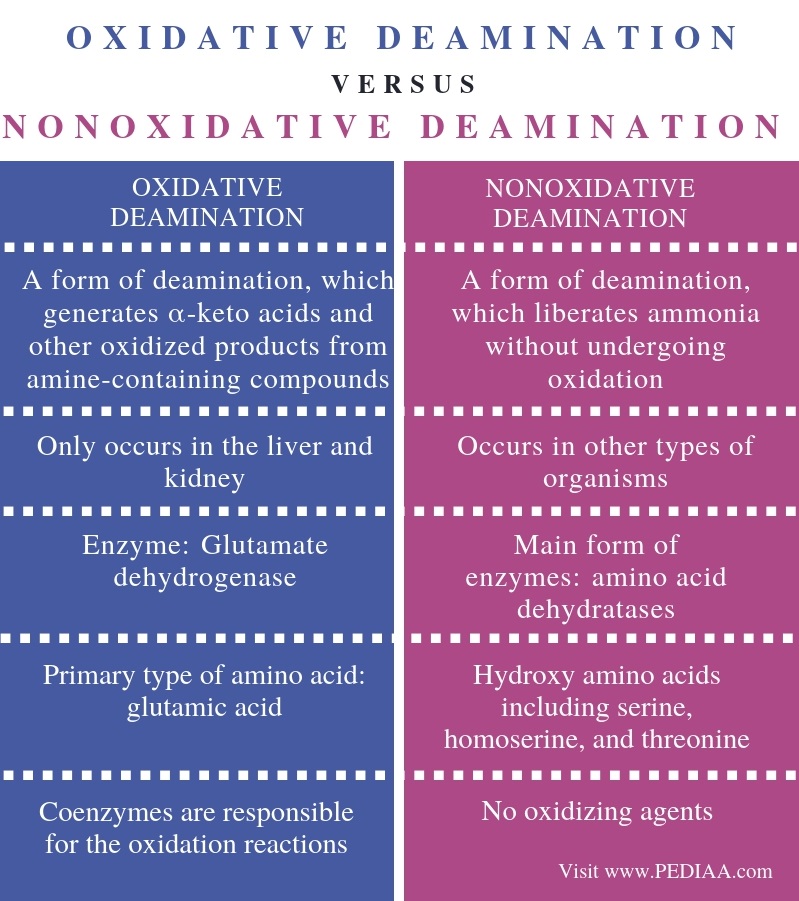
What is the Difference Between Oxidative and Nonoxidative Deamination
Oxidative Deamination. In the breakdown of amino acids for energy, the final acceptor of the α-amino group is α-ketoglutarate, forming glutamate. Glutamate can then undergooxidative deamination, in which it loses its amino group as an ammonium (NH 4 +) ion and is oxidized back to α-ketoglutarate (ready to accept another amino group):
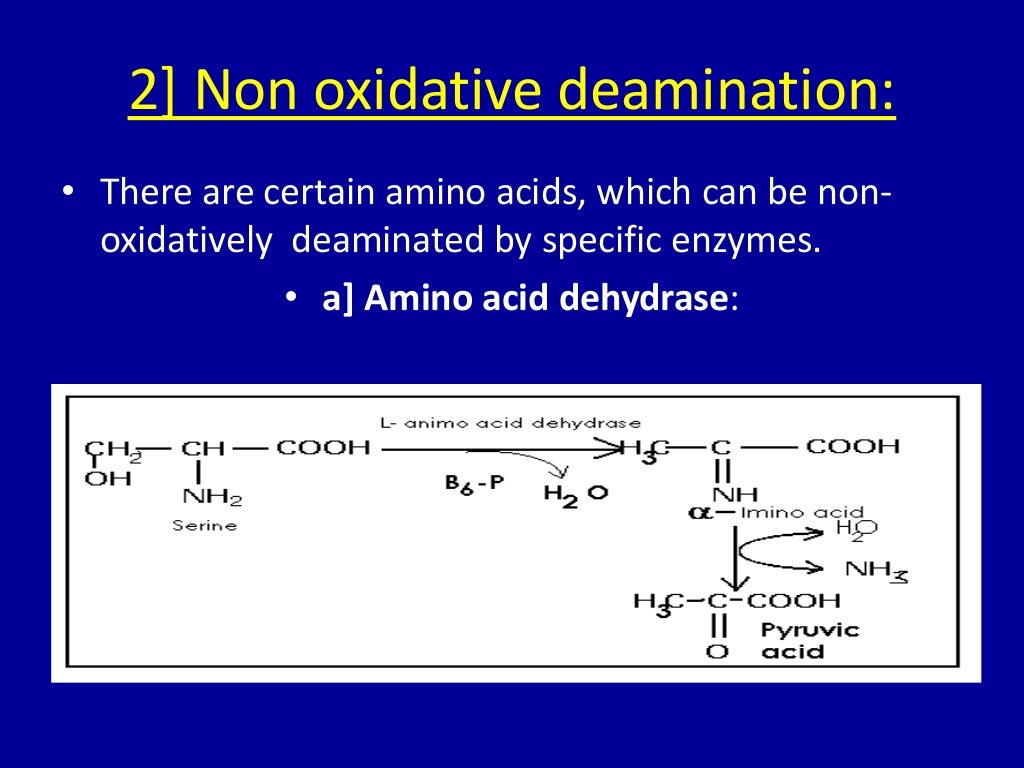
General Reactions involved in amino acid metabolism
Amino acid metabolism lecture on Nonoxidative deamination.http://shomusbiology.com/Download the study materials here-http://shomusbiology.com/bio-materials.h.

Non Oxidative Deamination Reactions YouTube
3.1.2 Non-oxidative Deamination. It is the deamination of amino acids in the absence of molecular oxygen in cells. Non-oxidative deamination takes place by substrate-specific enzymes. Depending on types of amino acids, non-oxidative deamination has the following three types:

Oxidative Deamination Oxidative and nonoxidative deamination amino acid catabolism. YouTube
Nonoxidative deamination is a type of deamination reaction in which the removal of the amine group occurs without proceeding through an oxidation reaction. H.

Deamination Oxidative and nonoxidative deamination YouTube
0:00 / 5:31 Introduction Oxidative Deamination | Oxidative and non-oxidative deamination | amino acid catabolism. Animated biology With arpan 185K subscribers Join Subscribe 158 Share 10K.
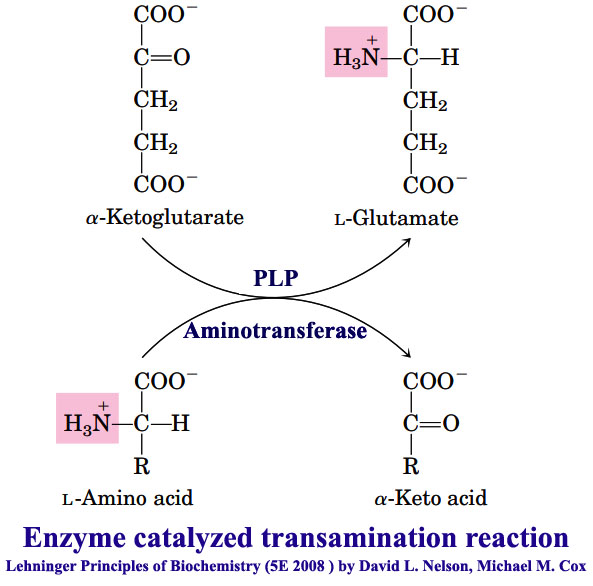
General reactions of amino acid metabolism Transamination, Oxidative and Nonoxidative
Oxidative Deamination. In the breakdown of amino acids for energy, the final acceptor of the α-amino group is α-ketoglutarate, forming glutamate. Glutamate can then undergo oxidative deamination, in which it loses its amino group as an ammonium (NH 4 +) ion and is oxidized back to α-ketoglutarate (ready to accept another amino group):